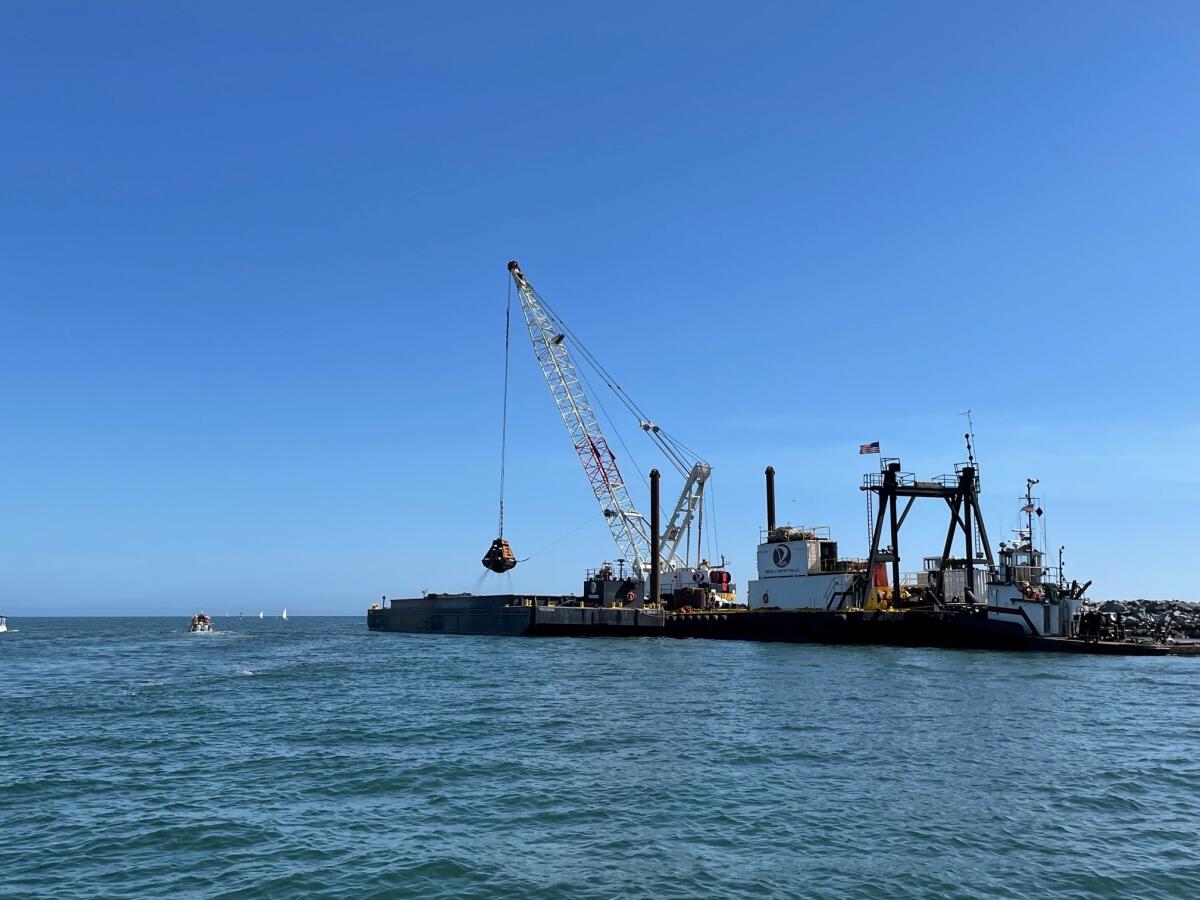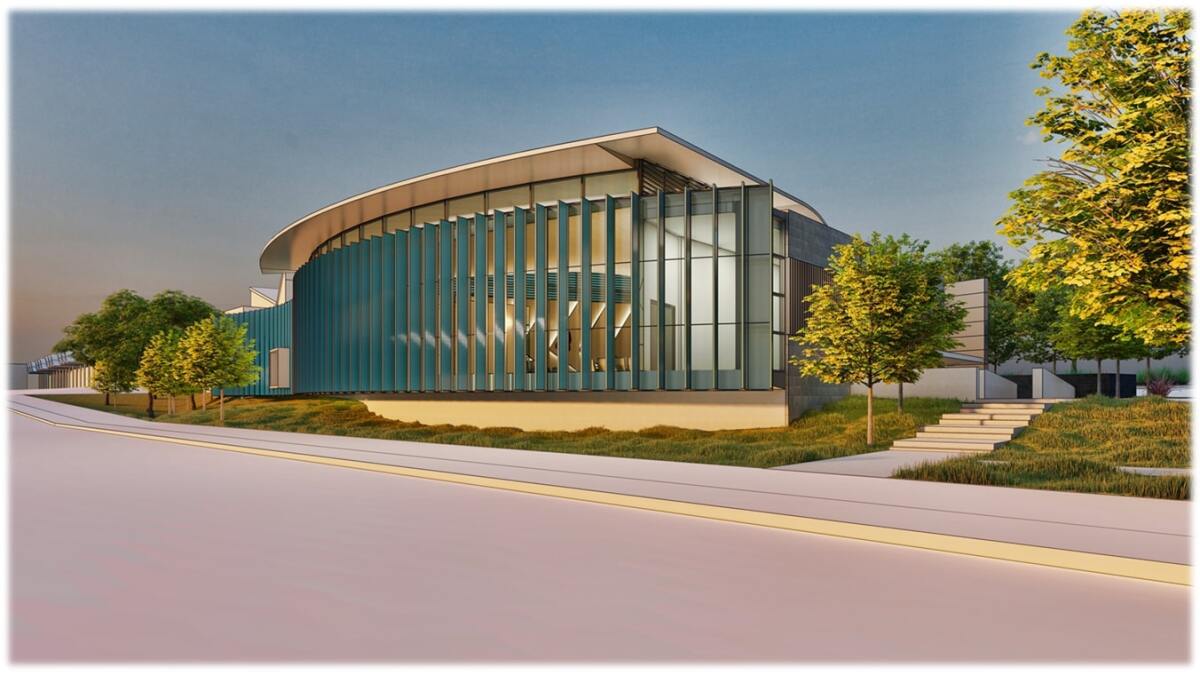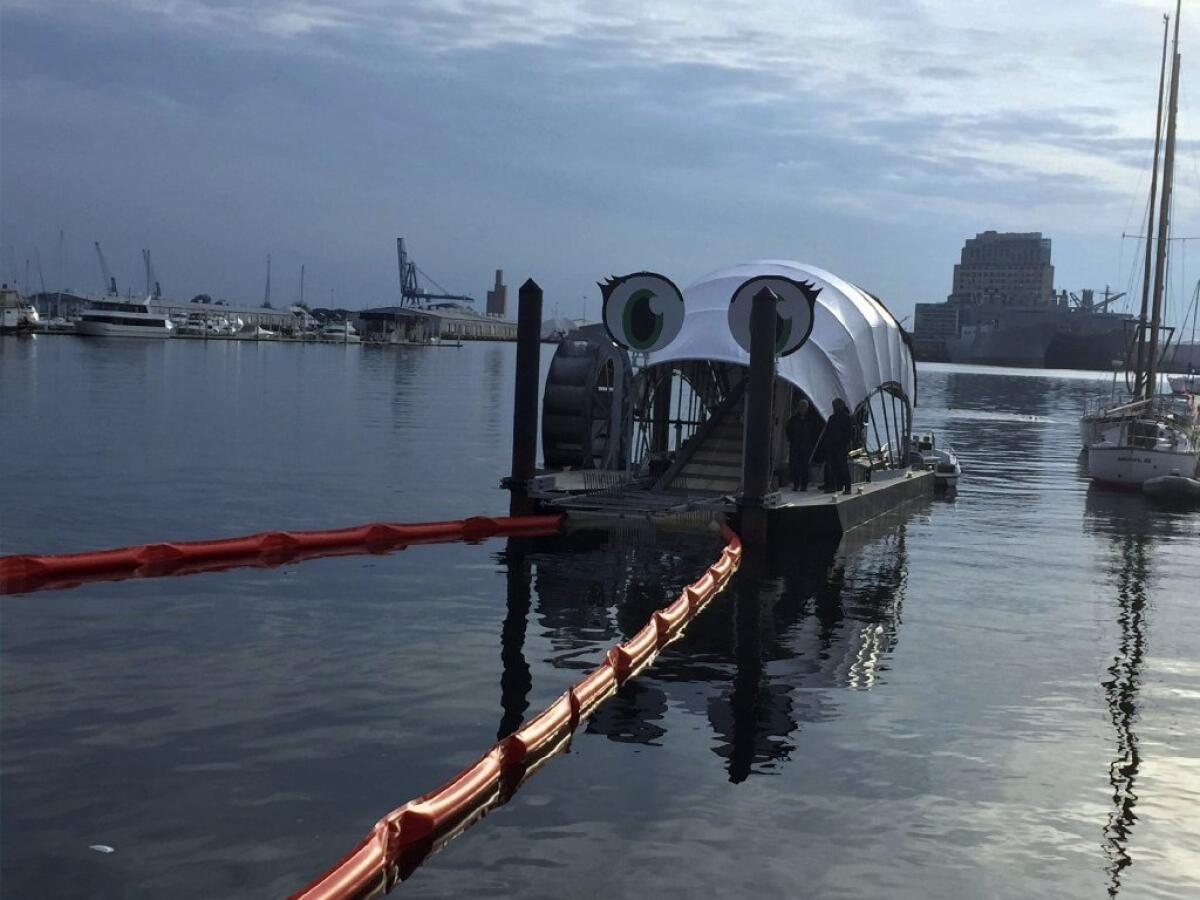Newport Beach looks ahead to new capital improvement projects in 2023

At a special planning meeting in late January, the Newport Beach City Council received a presentation and reviewed some of the capital improvement projects coming up the pipeline this calendar year.
The planned projects include major works such as the dredging of the lower federal Newport Harbor channels, the first phase of which was completed last summer, and the Central Library Lecture Hall, which has since been officially named Witte Hall after a $4-million commitment for the building by Bill Witte and Keiko Sakamoto in August.
Here’s a quick look at the projects:
Lower Harbor federal channel dredging
Newport Harbor is one of the largest recreational harbors in the country, and, through natural processes of storm water and erosion, it experiences the movement and accumulation of sediment. That sediment needs to be removed periodically to maintain federally authorized channel depths to allow for the safe navigation.
The harbor last underwent a major but partial dredging project in 2012-13 that removed roughly 600,000 cubic yards of sediment. Mercury-tainted sediment was previously discovered near the turning basin and Lido Peninsula, and much of the conversation circling the dredging project has focused on the construction of the confined aquatic disposal site, known as a CAD, within Newport Harbor to contain that sediment which was determined to not be safe for ocean release.
The Coastal Commission approved the application for the project in October, to the objection of local environmental groups who said the city was claiming the sediment was wrongfully characterized as “harmless.”
The first phase of the dredging project was completed in the summer of 2021, when around 125,000 cubic yards of sand were removed, according to the city. The second phase is expected to begin this spring at an estimated cost of $20 million. Federal contract bids are expected to open this month and be awarded by March with construction to begin sometime by early April.

Central Library lecture hall
Crews laid the initial groundwork on Witte Hall in 2017-18 to functionally replace the Friends Room, which had been used for the library’s programming since 1994, at the central library adjacent to Newport Beach City Hall.
A previous City Council approved the design contract in November 2019.
Supporters said the city has long outgrown the room, which necessitated the construction of a library lecture hall. City staff reported that plans were approved in December 2021 and that annual participation in the library’s programming increased from about 28,000 participants in 2009-10 to over 72,000 by 2018-19.
The total cost of the project was expected to be $12.8 million, with the price to be split evenly between the city and the Friends of the Newport Beach Library Foundation up to $13 million. New estimates place the building costs at around $14 million and an all-in cost of around $17.5 million.
With contract bids expected to be returned in February, council members briefly discussed the growing cost of the project, the possibility of increasing that threshold of the 50-50 split and how to address funding shortfalls.
Balboa Island drainage system
Still in the design phase is the Balboa Island drainage system. Public works director Dave Webb jokingly described the small, man-made island as a “bathtub” because of its retaining sea walls, especially during high tide.
Balboa Island was built in the 1900s and became an official part of the city of Newport Beach in 1916. It is the biggest island that is considered part of the Balboa Island community and is joined by bridge to two other islands: little Balboa Island and Collins Isle. Flooding isn’t uncommon on the island, where streets on the westernmost part of the island are only about 5 feet above sea level.
City workers reportedly spend about 1,600 hours annually opening and closing valves to regulate the water on land and on at least three separate occasions in the five years, the island’s seen significant flooding — December 2018, November 2019 and July 2020 — though it escaped unscathed in the recent spate of winter storms.
Discussions on modernizing the island’s drainage infrastructure, which relies on manually operated tide gates, came up in April 2021. The plan is to establish an automated pump system that could manage high capacities and reduce the discharge points from 25 down to one. The pump station, expected for the west end of the island, is currently in design. Further public outreach is expected.
The total cost is currently estimated at $20 million.
Replacing the 15th Street restroom
The 15th Street restroom was originally built in 1961 and saw major rehabilitations in 1987 and 2001. Webb described it as one of the key restrooms on the Balboa Peninsula and said it requires replacement as its aging plumbing system deteriorates. It is expected to cost about $1 million to replace. Progress on this has not significantly moved past conceptual designs and discussions with the community, but it is expected to include a boardwalk trail separation.

Newport Bay Trash Wheel
The Newport Bay Trash Wheel is in its design and permitting phase, though it received approval from the California Coastal Commission last June.
Discussions on this project date to 2017. The wheel is intended to help remove debris from Newport Bay. Two booms are expected to span the width of the San Diego Creek and funnel trash towards the stationary barge, which will be mounted with a 17-foot-tall water wheel. Debris will then be brought onto a conveyor belt and into two dumpsters mounted on a fixed rail system to be conveyed to land.
The project is expected to cost an estimated $3.4 million, though Webb said the city does have a significant amount of grant money — about $2.2 million — to fund its efforts. About $1.9 million remains with the city facing a current shortfall of $1.6 million. City staff said it is believed that work may be able to start next fall, provided no permitting delays and further grant funding can be secured.
All the latest on Orange County from Orange County.
Get our free TimesOC newsletter.
You may occasionally receive promotional content from the Daily Pilot.




